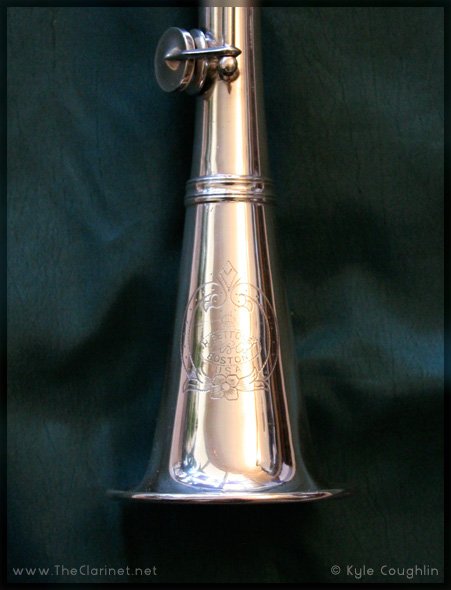A Brief History of Metal and Silver Clarinets
During the first half of the Twentieth Century, hundreds of thousands of metal clarinets were produced. Many of these clarinets were used by students or were played in marching bands. They were a good alternative to wooden clarinets for several reasons -- they are resistant to cracking and can be played in any weather condition, they are easily mass produced, and they are very shiny. Because they were so easily mass produced, many of the instruments were of inferior quality. Metal clarinets developed a bad reputation and as soon as instrument manufacturers were able to make clarinets out of plastic, the metal clarinets went out of fashion.
 However, several companies made professional level metal clarinets to compete with wooden instruments. The Silva-Bet, made by Bettoney, and the Silver King, made by H. N. White were among the top professional metal or silver clarinets, along with those manufactured by Selmer, Conn, and Haynes (the famous flute maker). Top of the line instruments were also made by the Holton, Buescher, and Pedler companies.
However, several companies made professional level metal clarinets to compete with wooden instruments. The Silva-Bet, made by Bettoney, and the Silver King, made by H. N. White were among the top professional metal or silver clarinets, along with those manufactured by Selmer, Conn, and Haynes (the famous flute maker). Top of the line instruments were also made by the Holton, Buescher, and Pedler companies.
Despite the fact that many of these metal clarinets were outstanding instruments, their reputation was ruined by all of the cheaply made horns that did not sound good and played very badly out of tune. Today there are a number of clarinetists and collectors who understand the value of the instruments. Metal clarinets can be found on eBay and every once in a while, a good instrument will appear for auction.
Can You Hear the Difference Between a Metal and a Wooden Clarinet?
Visit the Metal Clarinet Test page to listen to four different clarinets. See if you can tell the difference between metal and wood.
Further links:
The Metal Clarinet Test
My experiences with metal clarinets
My thoughts and opinions on metal clarinets
The advantages of metal clarinets
More info and pictures of the Silva-Bet used in the recordings
More info and pictures of the Cleveland used in the recordings




